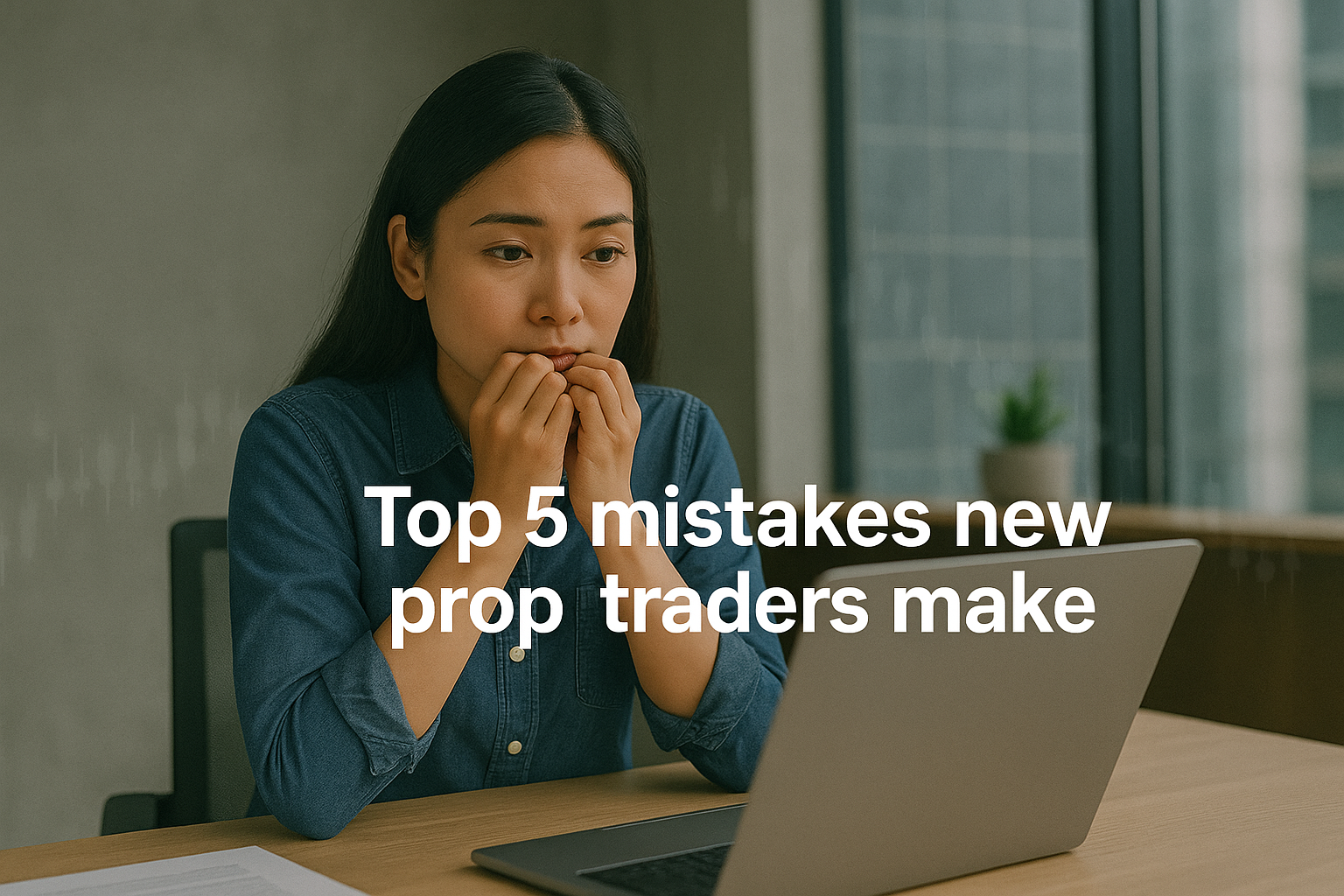
Top 5 Mistakes New Prop Traders Make

For many traders, proprietary (prop) trading offers a fast track into the world of futures trading, without the need for large capital up front. But while the opportunity may be enticing, passing a prop firm evaluation and staying consistently funded can be a real challenge, especially for newer traders.
Let’s explore five of the most common prop trading mistakes new traders make, with tips to help you avoid them.
Mistake #1: Ignoring the rules of the prop firm
Every prop firm has its own set of rules—whether it’s maximum drawdown, daily loss limits, minimum trading days, etc. One of the biggest mistakes new prop traders make is glossing over these requirements in favor of chasing big wins.
How to avoid it:
Before placing a single trade, take the time to fully understand the evaluation criteria and rule set by your chosen prop firm. Build a trading plan that works within those parameters, and review your performance daily to ensure you’re staying in compliance.
Mistake #2: Overtrading to make up for losses
It’s a common trap: After a losing trade, emotions (and FOMO) kick in and traders try to “win it back” by taking more trades than planned. This can lead to overtrading, which can quickly blow past loss limits and violate prop firm rules.
How to avoid it:
Set a strict daily max trade count and stop-loss limit—and stick to it. Use a platform that offers built-in risk management tools, like Tradovate, to help you better control your trading behavior.
Mistake #3: Using strategies that don’t fit short-term evaluations
Many new prop traders apply swing or long-term strategies in evaluations that are designed for short-term performance. If the strategy doesn’t align with the prop firm’s time frame, it could result in failure, regardless of its long-term profitability.
How to avoid it:
Tailor your trading strategy to match the evaluation window. For example, scalping or intraday strategies may better suit fast-moving evaluations. Use tools like Tradovate's Market Replay to test and refine your approach before trading live.
Mistake #4: Neglecting risk management
Futures trading is inherently leveraged—and without proper risk controls, even one bad trade can derail your progress. One of the most common prop trading errors is trading too large or failing to use stop-losses.
How to avoid it:
Start small and size up only after you’ve demonstrated consistency. Use bracket orders with defined stop-loss and take-profit levels, and consider automated risk controls to prevent emotional decision-making.
Mistake #5: Failing to review and adjust
Many new traders repeat the same mistakes because they don’t take the time to review their trades. Prop evaluations often have tight timelines and little room for error, so being able to learn and adapt quickly is essential.
How to avoid it:
Make post-trade analysis a daily habit. Use trading journals, platform analytics, and performance tools to identify patterns in your behavior. Adjust your plan as needed to improve execution and reduce errors.
Trade on the platform preferred by top prop firms and traders: Tradovate Prop
Avoiding these prop trading mistakes is only half the battle. Having the right tools can give you the edge to pass evaluations, stay funded, and grow as a trader. Tradovate Prop is purpose-built for the grind of prop trading—combining speed, flexibility, and advanced tools to help you perform at your best.
Ready to take your prop trading to the next level? Explore the power of Tradovate Prop. Find a prop firm to get started today.


